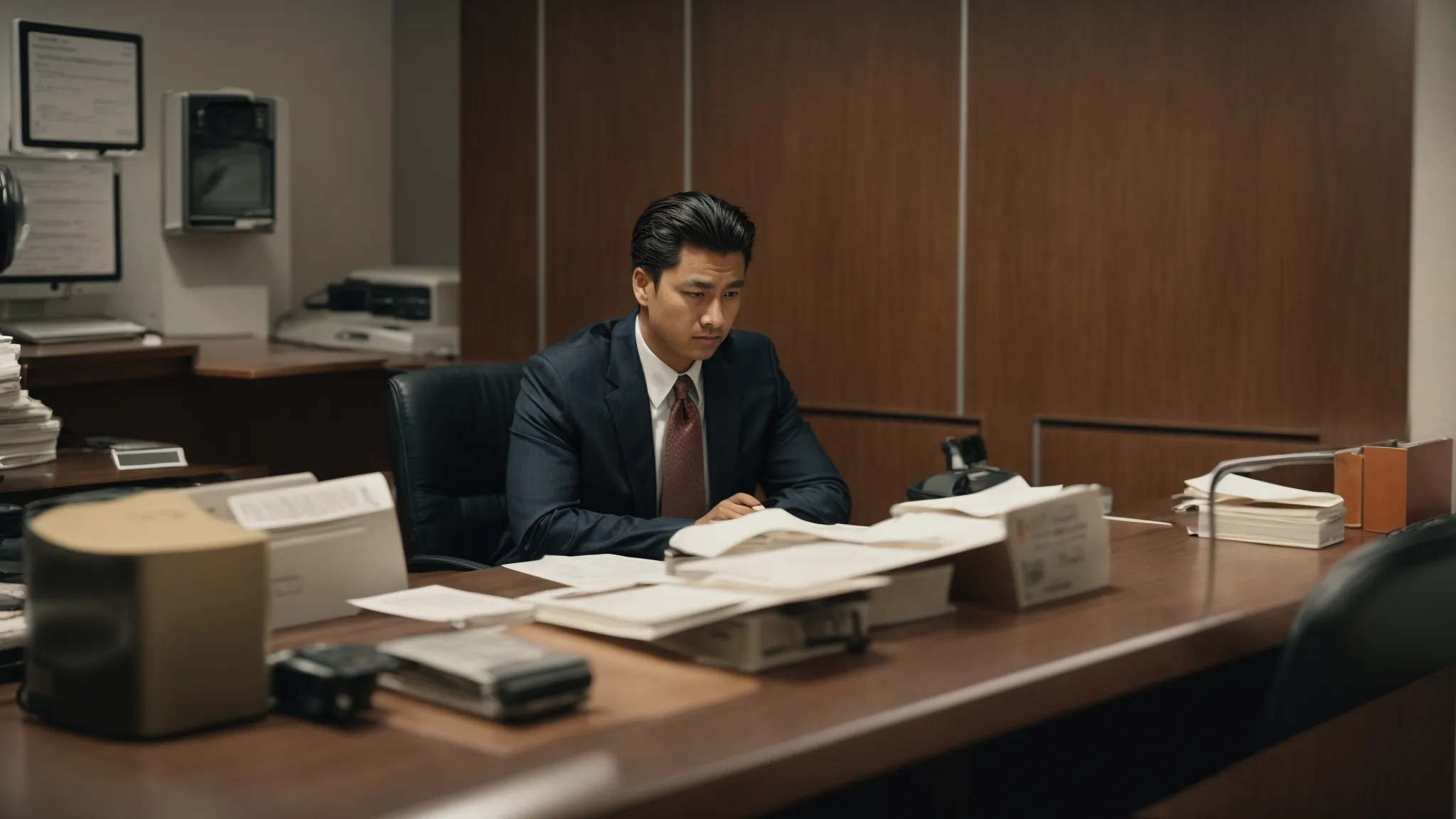Demystifying Collateral: What It Means for Bail Bonds
Collateral dances in the shadows of the bail bond world, a silent guarantor whispering promises of freedom.
Like a lighthouse stands guard over a fog-heavy sea, collateral guides your voyage through the tempestuous bail system.
It’s a shield, a pledge—assets rooting for your return to the court’s embrace.
Navigating this terrain can feel akin to traversing a labyrinth, with family heirlooms and hard-earned savings hanging in the balance.
Keep reading to lift the veil on the enigmatic nature of collateral and its pivotal role in the bail bond equation.
Key Takeaways
- Collateral Serves as a Tangible Commitment Ensuring a Defendant’s Return to Court
- Diverse Assets, From Real Estate to Heirlooms, Can Be Accepted as Bail Bond Collateral
- The Collateral Is Held by the Bail Bond Company as a Pact of Trust During the Court Process
- Collateral Is Returned Post Trial if Conditions Are Met, or Forfeited if the Defendant Fails to Comply
- Risk Management Is Crucial When Offering Property as Collateral to Prevent Potential Financial Losses
Understanding the Role of Collateral in Bail Bonds

Amidst a tempest of confusion and stress, the concept of collateral stands as a lighthouse, guiding those navigating the choppy waters of the bail bond system.
Like an anchor preventing a ship from drifting aimlessly, collateral secures a bail bond agreement, ensuring that obligations are not lost in the murky depths of judicial procedures.
As we embark on this informational voyage, we’ll cast a net over ‘collateral’ as it pertains specifically to bail bonds, grasping not only its definition but also the critical role it plays in safeguarding the bail bond agreement’s integrity—a covenant that balances liberty with responsibility.
Defining Collateral Within the Bail Bond Context
In the shadowy dance of legality, collateral stands as a stalwart guardian of promises, its nature etched in the realm of the bail bond narrative. Picture it as an earnest pledge, a tangible assurance presented to a bail bond company as a testament to the defendant’s commitment to stand before the court’s scrutinizing gaze at the appointed time.
My role entails stripping away the shroud of mystery that blankets the term ‘collateral.’ It’s a concept steeped in the gravitas of financial security—a monetary or physical asset a bail bondsman holds as a shield against the potential flight risk of an accused individual released from the chains of custody.
How Collateral Secures a Bail Bond Agreement
In the intricate tapestry of bail bonds, collateral interweaves threads of trust and accountability. By proffering an asset of significant value, the accused weaves a bond of assurance with the bail bond agent, a pact that glistens with the promise of court appearance.
Should the day arrive when the whisper of temptation beckons an individual to vanish into the ether, collateral rises as a formidable adversary to such thoughts. The value tethered to this agreement is the specter that haunts the minds of potential absconders, brandishing the heavy cost of each step away from the agreed path:
- Real estate or property that echoes the gravity of responsibility
- Vehicles that carry the weight of one’s word as surely as they do their passengers
- Investments that bind one’s financial future to their pledge
Within the jurisprudential jungle, collateral does not merely tie an individual to a promise—it fortifies the bail bond itself. The bond becomes a living commitment, breathing with the lifeblood of financial stakes that have been laid down to secure freedom, yet anchoring the accused to the imperatives of justice.
Types of Assets Accepted as Bail Bond Collateral

Embarking on the exploration of collateral, one cannot help but stand in awe at the array of assets that serve as the sinew and backbone of bail bond agreements.
My pen, a humble torch, illuminates the seldom-seen corner of the bail bond world where personal treasures transform into bastions of assurance.
We shall unfurl the scrolls listing common assets that bondsmen accept with a nod—homes whispering of hearth and history, vehicles with engines still warm from the chase of daily life, and the palpable potential of hard-earned investments.
Equally, my musings will cast light on the less trodden path, revealing uncommon assets embraced by the discerning eyes of bondsmen, as they assess the worth of items as varied as the stories they tell.
This introduction seeks to pave the way, guiding you through the fortified gate into the realm where assets, great and small, become the keystones of freedom’s temporary lease.
Listing Common Assets Used for Securing Bonds
My journey takes me deeper into the heart of collateral, where the most common treasures are pledged against freedom’s fragile promise. Homes, echoing with stories and standing firm on their foundations, often find themselves signed over to bondsmen, their worth measured in more than mere currency, but in the gravity of the situation at hand.
Vehicles, too, join the ranks of the commonplace yet invaluable collateral, their titles entrusted to the guardianship of bail bond agents. These automobiles, motorcycles, and boats possess kinetic energy now stilled, the potential of their engines harnessed to underwrite a return to the solemn halls of justice.
Uncommon Assets That Might Be Considered by Bondsmen
My exploration uncovers a plethora of atypical treasures that bondsmen may consider. Jewelry with the luster of generations, fine art whispered about in hushed galleries, and heirlooms whose value is measured as much by sentiment as by sparkle.
At times, a bondsman’s eye might alight upon items of more unconventional worth: perhaps a collection of rare coins that clink with history, or the silent strings of an antique instrument waiting to resonate once again. These items, rich with story, have the potential to be key players in the collateral narrative.
The Process of Posting Collateral for a Bail Bond

Embarking down the undulating path of the bail bond system, my steps lead to the arcane doorway of posting collateral—a critical phase where value takes on a new identity in the quest for temporary liberty.
Here, I am your navigator, charting the journey where prized possessions transmute into anchors of trust.
Treading this ground with meticulous care, I illuminate the meticulous process of offering an asset as collateral, and I will lay bare the destiny of these precious pledges during the bail period.
Join me as we tread softly, yet deliberately, through the nuances of safeguarding your assets while ensuring compliance with the judicial odyssey.
Step-by-Step Guide to Offering an Asset as Collateral
Embarking on the meticulous odyssey of offering an asset as collateral, I initiate contact with the bail bondsmen and present my assets for their appraisal. This initial step pulses with the gravity of intention, as I carefully navigate the required paperwork, steadfastly clarifying the value of my property or investments with transparent evidence.
With diligent precision, my asset is then evaluated by the bondsman’s seasoned gaze, deciding whether its worth mirrors the bail amount set forth by the court. Upon agreement, I sign the dotted line, a gesture that forges a bond of trust between us and stitches the fabric of responsibility that accompanies my newfound, yet fleeting, freedom.
What Happens to Your Collateral During the Bail Period
During the bail period, collateral remains in the custodianship of the bail bond agent—a silent sentinel awaiting the outcome of judicial proceedings. It slumbers like a dragon hoarding its gold, guarding the pact struck between the justice system and the individual whose freedom hangs in the balance.
Upon the resolution of the case, the fate of the collateral reaches a crossroads: should the individual uphold their end of the bargain, appearing in court as promised, the collateral is returned. However, a breach of this promise unleashes consequences as the secured assets could be forfeited, setting in motion the inexorable gears of recovery to compensate the bondsman’s risk:
- Return of collateral in its entirety post court compliance
- Forfeiture and liquidation of assets in case of agreement violation
Risk Factors When Using Property as Collateral

Venturing into the labyrinth of collateral’s complexities, we confront the stark reality of leveraging property against bail bonds.
Like a gambler placing a revered heirloom on the table, using one’s estate as a grounding stake comes laced with inherent perils—a sobering truth my role is meant to unfurl.
With eyes wide open to the potential pitfalls, I tread thoughtfully on this terrain, illuminating the shadows where risk lurks and laying out strategies to fortify against losses.
The aim is to thread the needle, balancing the scales between the value of tangible assets and the volatile dance of freedom against assurance.
Analyzing Potential Risks Associated With Using Property
Entrusting one’s property as collateral in the bail bond sphere is akin to casting a treasured asset into the vast ocean of judicial uncertainty, where it may either float or sink. I stand on this precipice of decision, where property hinges on the promise of another’s actions, cognizant that the home which echoes my laughter could potentially become the haunt of my despair if the bond is breached.
The act of tethering property to a bail agreement invites a risk as profound as the roots of an ancient oak tree reaching into the earth, unseen yet foundational. My consciousness grapples with the reality that the steadfastness of my asset could be undone by another’s flight, transforming my investment into the wings of their freedom and my potential ruin.
How to Mitigate Risks When Putting Up Property for Bail
As I survey the horizon of risk management, it becomes evident that obtaining an impartial appraisal of my property shields me from overcommitting to the bail bond agreement. This appraisal, like a beacon, shines light on the true worth of my property, assuring that the value anchored in this process reflects real-world estimations, not just a desperate bid for freedom.
My next move involves consulting with a seasoned legal eagle, whose expertise in navigating the stormy seas of bail bonds can spot the shoals that might otherwise escape my notice. By arming myself with adroit counsel, I erect a bulwark against the unforeseen squalls that can turn the tide of this financial voyage.
Conclusion
In conclusion, demystifying the role of collateral within the bail bond system is critical for those caught in the throes of the judicial process.
Collateral acts as a vital safeguard, anchoring both the bail bond agreement and the promise of the defendant’s court appearance.
It entails a range of assets, from common items like real estate and vehicles to rare collectibles, which all serve as security for the bail bond agent against the risk of the defendant absconding.
The process of posting collateral requires careful evaluation and documentation, ensuring that the value of the assets matches the bail amount.
During the bail period, the collateral is in the bond agent’s custody and is returned if the defendant complies with court appearances.
In cases of non-compliance, the assets may be forfeited and sold to cover the bond.
There are inherent risks when using property as collateral, such as the potential for loss if the defendant fails to appear in court.
To mitigate these risks, it is advisable to obtain an accurate appraisal of the property and seek legal guidance before proceeding.
Ultimately, a thorough understanding of how collateral functions within the bail bond system equips individuals with the knowledge to navigate this aspect of the legal system more effectively, balancing the pursuit of temporary freedom with the obligations of justice.